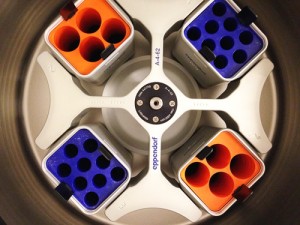The biological aging process takes place at both the organismal and cellular levels. Cellular senescence occurs when the cell’s DNA is unable to replicate, eventually resulting in cell death. The changes in the gene expression pattern of senescent cells include the increase in levels of factors that inhibit cell cycle growth and the decrease in levels of factor that promote cell cycle progression. As miRNAs are among the most powerful regulators of gene expression, recent discoveries have evidenced the multiple roles of miRNAs in senescence. Key factors limiting cellular replication — including DNA damage and repair mechanisms, oxidative stress, and pathogenesis — are under miRNA control.
 Cellular senescence can be divided into replicative senescence, or the inability of the cell to undergo further cell division after a certain number of cell cycles; and stress-induced premature senescence (SIPS) arising from exposure to unhealthy environments. For example, cytotoxins, radiation, and other external agents can cause DNA damage or remodel the closely associated chromatin in unexpected or adverse ways. Senescent cells withdraw from the normal cycle of cell division.
Cellular senescence can be divided into replicative senescence, or the inability of the cell to undergo further cell division after a certain number of cell cycles; and stress-induced premature senescence (SIPS) arising from exposure to unhealthy environments. For example, cytotoxins, radiation, and other external agents can cause DNA damage or remodel the closely associated chromatin in unexpected or adverse ways. Senescent cells withdraw from the normal cycle of cell division.
Qualitatively, both chronobiologically and prematurely aged skin are evidenced by multiple visual signposts such as wrinkling and thinning, textural unevenness, and discoloration and other pigmentary irregularities. The overlay of prior skin damage or skin problems (such as sunburn or acne) accelerates an individual’s skin cell aging rate to produce effects that can suggest the choice of cosmetic or clinical treatment.





